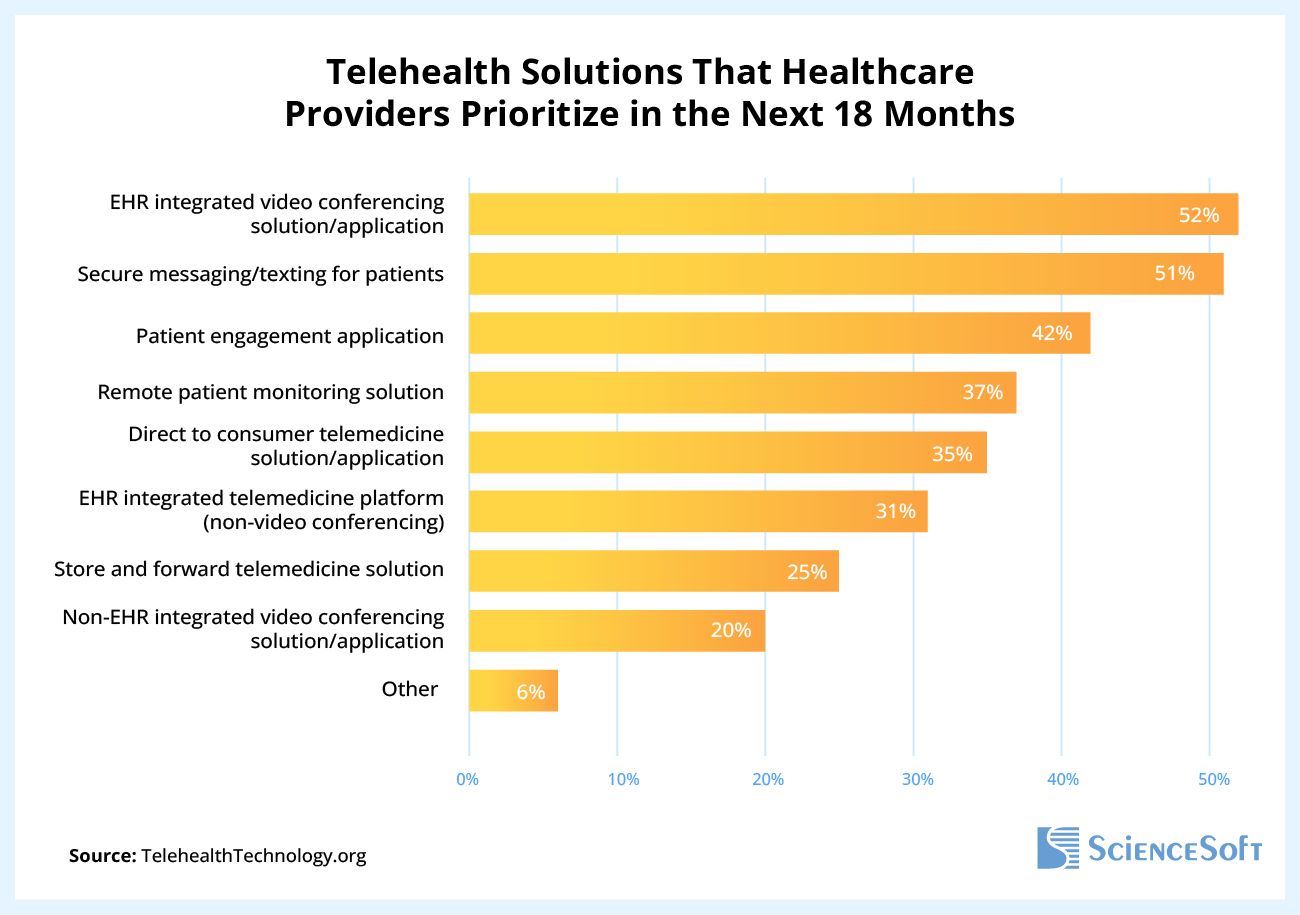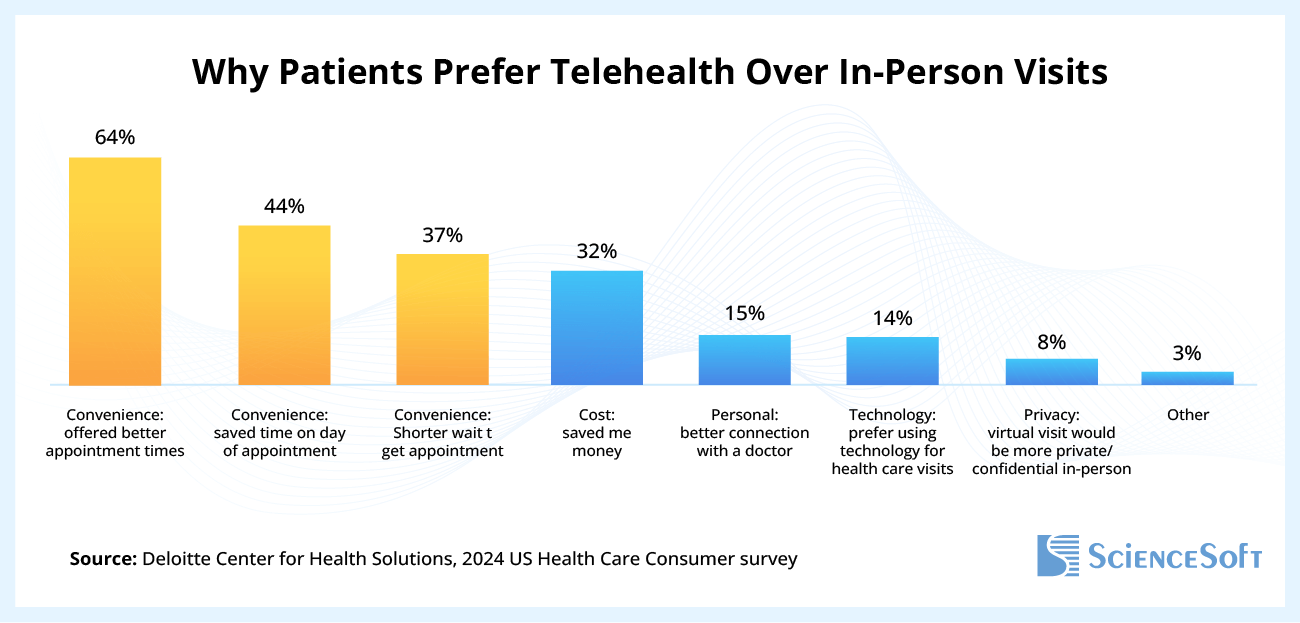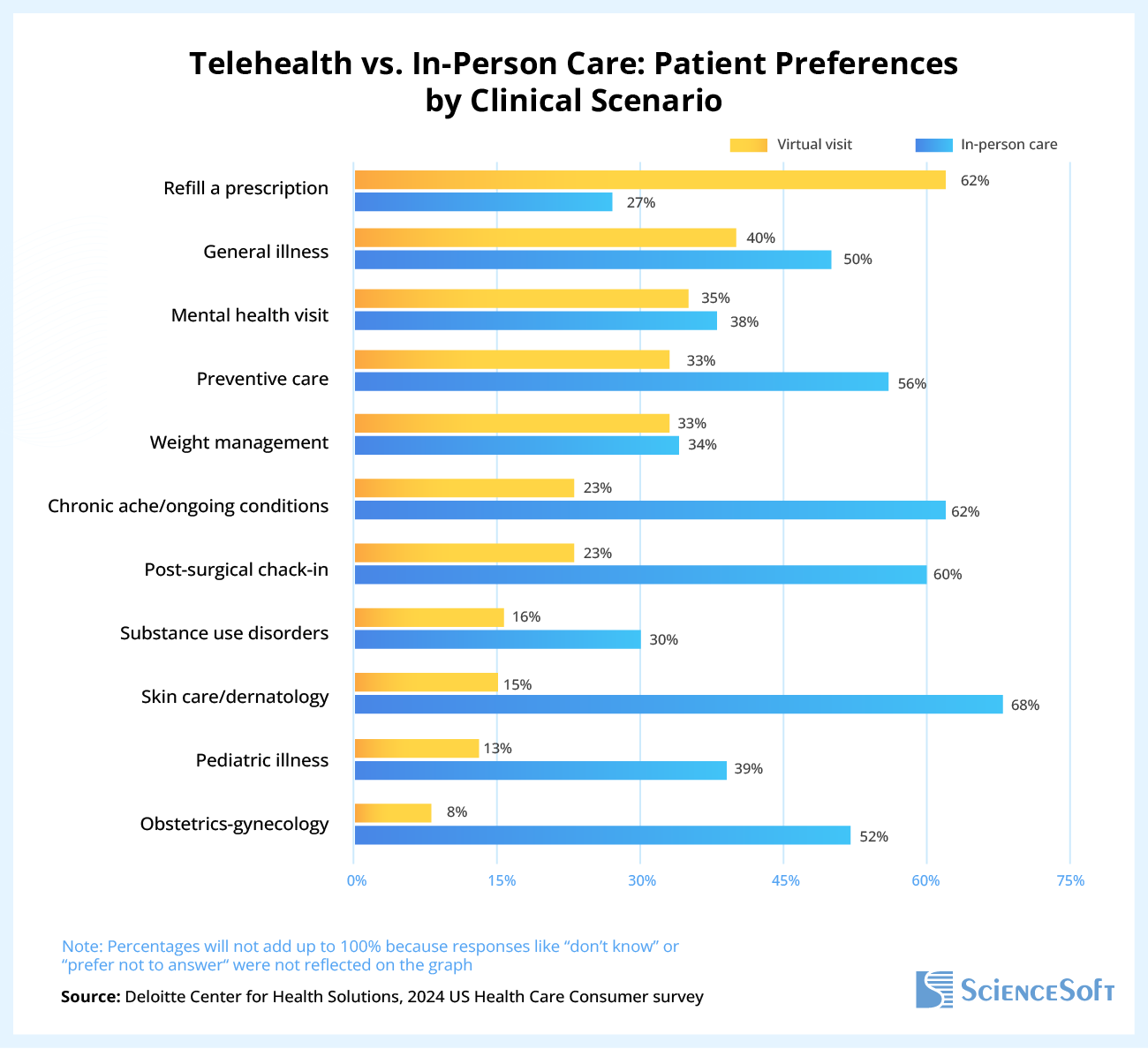2025 Telehealth Statistics and Trends: What Healthcare Providers Need to Know
Editor’s note: Gala overviews the current state of the telemedicine market, looks into telehealth app development forecasts and provides the most relevant statistics on the topic. If you are interested in telemedicine technology, you are also welcome to consider ScienceSoft’s offering in the development of telemedicine apps.
Telecommunication technologies in the healthcare industry are already widely used and keep on their expansion. However, some care providers, healthcare software development companies, healthcare experts, and digital marketers doubt whether telemedicine adoption is worth investing time and money in. I guess the reason for this uncertainty lies in the lack of insights into the telemedicine market.
Based on ScienceSoft’s telehealth research and experience in medical app development, I reveal some important telemedicine market statistics and outline the market trends. The insights I share will help healthcare organizations, software product companies and medical device manufacturers decide if telemedicine is worth investing in. Journalists, marketing specialists, and researchers in the healthcare industry can also benefit from the statistics provided.
Telehealth market size and dynamics
The global telehealth and telemedicine market is expected to grow from $94.14 billion in 2024 to $180.86 billion by 2030, registering a CAGR of 11.5%. Such fast growth is mainly driven by the following factors:
- The growing number of geriatric patients.
- The need to expand healthcare access.
- The rise of chronic diseases and conditions.
- The shortage of medical staff.
- Advancements in telecommunications.
- The expansion of remote patient monitoring (RPM) technologies.
The U.S. telehealth market size was valued at $42.54 billion in 2024 and is forecasted to grow at a CAGR of 23.8% from 2025 to 2030.
Principal telehealth domains and use cases
National Telehealth Resource Center defines the following telehealth domains:
- Live Videoconferencing (Synchronous): Live, two-way interaction between a person and a healthcare provider using audiovisual telecommunications technology.
- Store-and-Forward (Asynchronous): Transmission of a patient’s medical information through an electronic communications system to a care provider without a real-time interaction.
- Remote Patient Monitoring (RPM): Personal health and medical data collection from an individual in one location via electronic communication technologies, which is transmitted to a provider (hospitals, clinics, living facilities, etc.) in a different location for use in care and related support. We demonstrate how RPM can be beneficial for patients' health outcomes in a sample telehealth app with remote patient monitoring.
- Mobile health (mHealth): Healthcare services provided via mobile communication devices (cell phones, tablets, etc.).
Live videoconferencing is, by a wide margin, the most popular telehealth domain. According to the 2024 Telehealth Technology Survey, this technology is used by 80% of the surveyed organizations. The recent statistics show that it is likely to remain a top priority for healthcare providers in the near future as well. Below, you can find the full list of telemedicine solutions that healthcare providers are most interested in the upcoming years:

How physicians adopt telehealth tech
As the 2024 Telehealth Technology Survey shows, more than half of the surveyed organizations plan on expanding their telemedicine utilization in the near future.
The technology is used across various healthcare domains, with mental and behavioral health being the most common.

How patients use telehealth apps
According to Deloitte’s 2024 survey, 44% of patients had a virtual visit in the previous 12 months. Of those who did, 94% are willing to do it again. The most common reason for preferring telemedicine to in-person appointments is convenience, which is associated with better appointment times, shorter wait times, and better scheduling.

Many patients are willing to use the technology to refill a prescription, receive primary care services, or have a mental health consultation. Below is a breakdown of different scenarios and the participants’ preferences.

Telehealth is here to stay
Statistics prove that telemedicine is already an integral part of the medical industry, and its popularity is not going to decline. Healthcare organizations (hospitals, clinics, assisted living facilities, etc.) eagerly opt for telehealth solutions, while medical staff and patients mostly have a positive experience with telemedicine technology. In fact, our team predicts that, by the end of 2026, 25–30% of all medical visits in the U.S. will be conducted remotely. If you want to know how to use telemedicine to your advantage, you are welcome to turn to ScienceSoft’s healthcare IT consultants.

